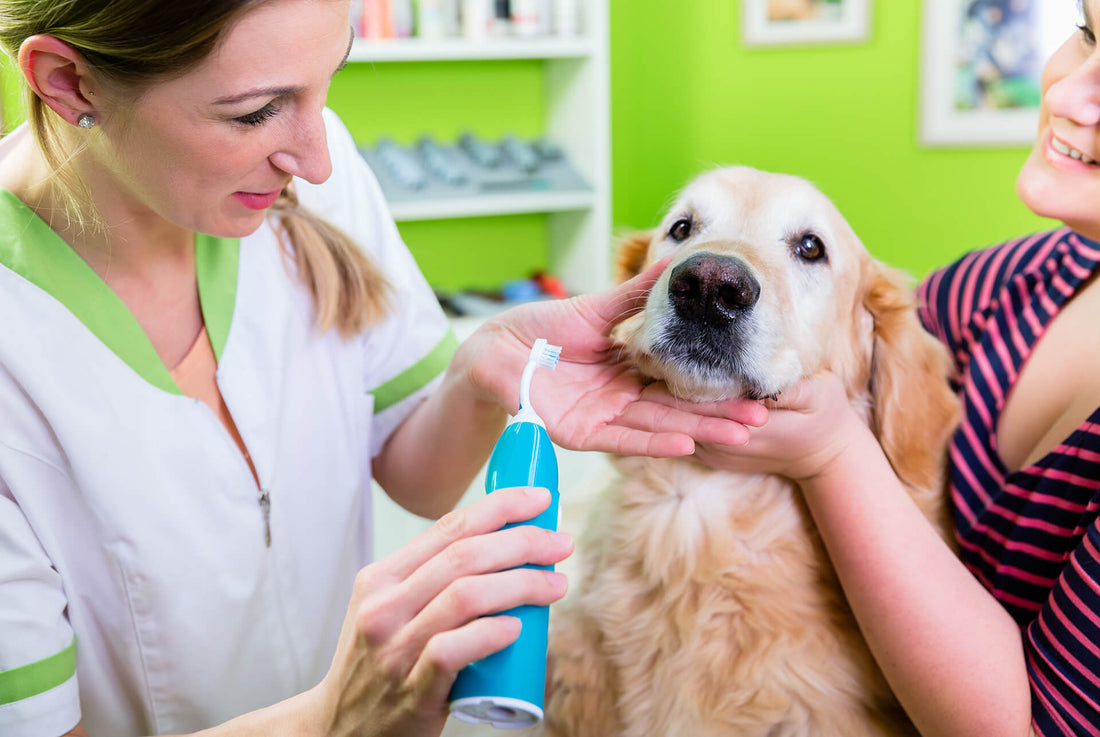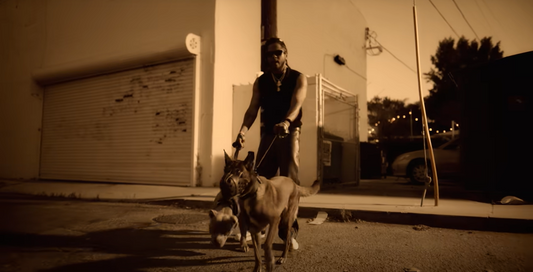Taking care of our canines oral health is as important as taking care of their overall health.
Just like people, canines require healthy gums and teeth. Proper oral care for our canines includes brushing their teeth at home daily and taking them in for professional dental cleanings.
Did You know:
- Poor dental care can cause many health problems. Dental disease can lead to painful and swollen gums and even tooth loss.
- It is recommended to brush your canine's teeth to prevent serious dental disease, at home at least two to three times per week, and take your canine for professional dental cleaning once a year.
Is it okay to use human toothpaste?
No! Human toothpaste contains ingredients that should not be swallowed. If it is swallowed, it can cause digestive disturbances. Many human kinds of toothpaste contain high sodium levels, which may even make your pet sick, while others may contain xylitol, which is toxic for dogs.
Why is pet toothpaste recommended?
Dog toothpaste is available in many different flavors that are appetizing to dogs, including poultry, beef, malt, and mint. By using a product that tastes good, your canine will be more likely to enjoy the experience.
Why should I brush my canine's teeth?
It is estimated that over 2/3 of dogs over the age of three have periodontal disease, an inflammation or infection of the tissues surrounding the teeth. Periodontal disease starts as gingivitis caused by plaque and often progresses to involve the bony tooth sockets and painful tooth loss.
When should I brush my dog's teeth?
Like us, it is ideal for brushing your dog's teeth at least twice daily. For many canines, once brushing becomes a part of their daily routine, they will begin to expect and enjoy it.
Canine Teeth Cleaning 101
Your canine probably isn’t going to willingly let you brush their teeth the first time you stick a toothbrush in his mouth. Take some time to acclimate your canine to the experience first by following these steps:
- Massage your canine's lips, teeth, and gums. Lay your canine in a comfortable position. Using just your fingers, massage your canine’s lips in slow, circular motions for up to 30seconds to 1 minute once or twice a day. Next, massage his teeth and gums using the same motion. Your canine may need a few weeks to get comfortable with this massaging.
- Introduce canine toothpaste. You can introduce the brush once your canine is acclimated with a gum massage. Put a pea-sized amount of canine toothpaste on your index finger, let your pet taste it, and immediately reward your canine with a treat. Over a few days, increase the duration between your canine tasting the toothpaste and being rewarded.
- Introduce the toothbrush. Put a small amount of canine toothpaste on the toothbrush and let your canine lick the toothbrush. Immediately give the reward. Do this for several days, duration between licking and the reward.
- Once your pet has gotten acclimated, you can move forward with actually brushing his teeth.
- In small, circular motions, clean the teeth. Starting in one area of your canine’s mouth, gently lift the lip and clean the outside of the teeth and the gumline. Make the circular motions quick and smooth and calmly talk to your canine throughout the experience.
- Clean the teeth in short intervals. Your canine may not tolerate you cleaning their entire mouth at once. Stop every 5-10 seconds and give your pooch some positive reinforcement, like petting or talking cheerfully.
In total, it should take about 30 seconds to 1 minute to brush your canine’s teeth on each side. Remember to keep the teeth-brushing session short and fun.






